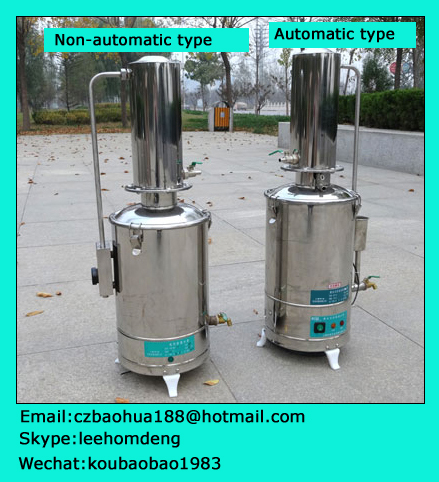BSC-1000IIA2 BSC-1300IIA2 BSC-1600IIA2 Microbiological Safety Cabinet
- Product Description
Class II Type A2/B2 Biological Safety Cabinet/Class II Biosafety Cabinet/Microbiological Safety Cabinet
Biological safety cabinets (BSCs) are used to protect personnel, products and the environment from exposure to biohazards and cross contamination during routine procedures.
A biosafety cabinet (BSC)—also called a biological safety cabinet or microbiological safety cabinet
Biological safety cabinet (BSC) is a box-type air purification negative pressure safety device that can prevent some dangerous or unknown biological particles from escaping aerosols during experimental operation. It is widely used in scientific research, teaching, clinical inspection and production in the fields of microbiology, biomedicine, genetic engineering, biological products, etc. It is the most basic safety protection equipment in the first-level protective barrier of laboratory biosafety.
How Biological Safety Cabinets Work:
The working principle of the biological safety cabinet is to suck the air in the cabinet to the outside, keep the negative pressure in the cabinet, and protect the staff through vertical airflow; the outside air is filtered by high-efficiency particulate air filter (HEPA). The air in the cabinet also needs to be filtered by HEPA filter and then discharged into the atmosphere to protect the environment.
Principles for selecting biological safety cabinets in biosafety laboratories:
When the laboratory level is one, it is generally not necessary to use a biological safety cabinet, or use a class I biological safety cabinet. When the laboratory level is Level 2, when microbial aerosols or splashing operations may occur, a Class I biological safety cabinet can be used; when dealing with infectious materials, a Class II biological safety cabinet with partial or full ventilation should be used ; If dealing with chemical carcinogens, radioactive substances and volatile solvents, only Class II-B full exhaust (Type B2) biological safety cabinets can be used. When the laboratory level is Level 3, a Class II or Class III biological safety cabinet should be used; all operations involving infectious materials should use a fully exhausted Class II-B (Type B2) or Class III biological safety cabinet. When the laboratory level is level four, a level III full exhaust biological safety cabinet should be used. Class II-B biological safety cabinets can be used when personnel wear positive pressure protective clothing.
Biosafety Cabinets (BSC), also known as Biological Safety Cabinets, offer personnel, product, and environmental protection through laminar airflow and HEPA filtration for the biomedical/microbiological lab.
Biological safety cabinets generally consist of two parts: a box body and a bracket. The box body mainly includes the following structures:
1. Air Filtration System
The air filtration system is the most important system to ensure the performance of this equipment. It consists of a driving fan, an air duct, a circulating air filter and an external exhaust air filter. Its main function is to continuously make clean air enter the studio, so that the downdraft (vertical airflow) flow rate in the work area is not less than 0.3m/s, and the cleanliness in the work area is guaranteed to reach 100 grades. At the same time, the external exhaust flow is also purified to prevent environmental pollution.
The core component of the system is the HEPA filter, which uses a special fireproof material as the frame, and the frame is divided into grids by corrugated aluminum sheets, which are filled with emulsified glass fiber sub-particles, and the filtration efficiency can reach 99.99%~100%. The pre-filter cover or pre-filter at the air inlet allows the air to be pre-filtered and purified before entering the HEPA filter, which can prolong the service life of the HEPA filter.
2. External exhaust air box system
The outer exhaust box system consists of an outer exhaust box shell, a fan and an exhaust duct. The external exhaust fan provides the power for exhausting the unclean air in the working room, and it is purified by the external exhaust filter to protect the samples and experimental items in the cabinet. The air in the work area escapes to protect the operator.
3. Sliding front window drive system
The sliding front window drive system is composed of front glass door, door motor, traction mechanism, transmission shaft and limit switch.
4. The lighting source and UV light source are located on the inside of the glass door to ensure a certain brightness in the working room and to sterilize the table and air in the working room.
5. The control panel has devices such as power supply, ultraviolet lamp, lighting lamp, fan switch, and controlling the movement of the front glass door. The main function is to set and display the system status.
Class II A2 biological safety cabinet/biological safety cabinet manufactory’s main characters: 1. Air curtain isolation design prevents internal and external cross-contamination, 30% of the air flow is discharged outside and 70% of the internal circulation, negative pressure vertical laminar flow, no need to install pipes.
2. The glass door can be moved up and down, can be positioned arbitrarily, is easy to operate, and can be completely closed for sterilization, and the positioning height limit alarm prompts.3. The power output socket in the work area is equipped with a waterproof socket and a sewage interface to provide great convenience for the operator4. A special filter is installed at the exhaust air to control emission pollution.5. The working environment is made of high-quality 304 stainless steel, which is smooth, seamless, and has no dead ends. It can be easily and thoroughly disinfected and can prevent the erosion of corrosive agents and disinfectants.6. It adopts LED LCD panel control and built-in UV lamp protection device, which can only be opened when the safety door is closed.7. With DOP detection port, built-in differential pressure gauge.8, 10° tilt angle, in line with the human body design concept
|
Model
|















